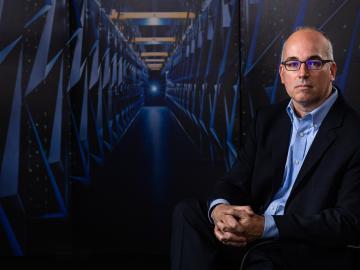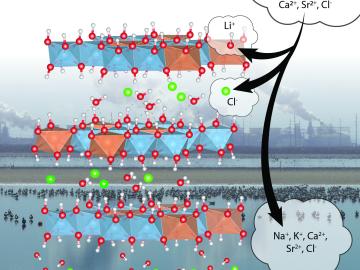Filter News
Area of Research
- Advanced Manufacturing (5)
- Biology and Environment (17)
- Clean Energy (70)
- Climate and Environmental Systems (2)
- Computer Science (2)
- Energy Sciences (1)
- Fusion and Fission (6)
- Fusion Energy (5)
- Isotopes (5)
- Materials (52)
- Materials for Computing (5)
- National Security (14)
- Neutron Science (28)
- Nuclear Science and Technology (22)
- Nuclear Systems Modeling, Simulation and Validation (2)
- Quantum information Science (3)
- Supercomputing (38)
Date
News Topics
- 3-D Printing/Advanced Manufacturing (36)
- Advanced Reactors (17)
- Artificial Intelligence (28)
- Big Data (17)
- Bioenergy (20)
- Biology (15)
- Biomedical (26)
- Biotechnology (7)
- Buildings (12)
- Chemical Sciences (14)
- Clean Water (5)
- Climate Change (26)
- Composites (4)
- Computer Science (55)
- Coronavirus (23)
- Critical Materials (5)
- Cybersecurity (4)
- Decarbonization (18)
- Education (1)
- Emergency (1)
- Energy Storage (29)
- Environment (46)
- Exascale Computing (8)
- Fossil Energy (2)
- Frontier (7)
- Fusion (17)
- Grid (12)
- High-Performance Computing (16)
- Isotopes (15)
- ITER (1)
- Machine Learning (16)
- Materials (13)
- Materials Science (48)
- Mathematics (4)
- Mercury (1)
- Microscopy (10)
- Molten Salt (2)
- Nanotechnology (19)
- National Security (15)
- Net Zero (4)
- Neutron Science (39)
- Nuclear Energy (37)
- Partnerships (9)
- Physics (15)
- Polymers (10)
- Quantum Computing (7)
- Quantum Science (23)
- Security (5)
- Simulation (10)
- Space Exploration (5)
- Statistics (2)
- Summit (21)
- Sustainable Energy (37)
- Transformational Challenge Reactor (5)
- Transportation (24)
Media Contacts

Energy storage startup SPARKZ Inc. has exclusively licensed five battery technologies from the Department of Energy’s Oak Ridge National Laboratory designed to eliminate cobalt metal in lithium-ion batteries. The advancement is aimed at accelerating the production of electric vehicles and energy storage solutions for the power grid.

An international team of researchers has discovered the hydrogen atoms in a metal hydride material are much more tightly spaced than had been predicted for decades — a feature that could possibly facilitate superconductivity at or near room temperature and pressure.

Peter Wang is focused on robotics and automation at the Department of Energy’s Manufacturing Demonstration Facility at ORNL, working on high-profile projects such as the MedUSA, a large-scale hybrid additive manufacturing machine.

After several years in the private sector exploring the unknown origins of neurodegenerative brain disorders such as Alzheimer’s, Chris Ellis thinks one of the keys to solving the mystery is at Oak Ridge National Laboratory: the world’s most powerful supercomputer.

The formation of lithium dendrites is still a mystery, but materials engineers study the conditions that enable dendrites and how to stop them.

Rigoberto “Gobet” Advincula has been named Governor’s Chair of Advanced and Nanostructured Materials at Oak Ridge National Laboratory and the University of Tennessee.

A team from the ORNL has conducted a series of experiments to gain a better understanding of quantum mechanics and pursue advances in quantum networking and quantum computing, which could lead to practical applications in cybersecurity and other areas.

Liam Collins was drawn to study physics to understand “hidden things” and honed his expertise in microscopy so that he could bring them to light.

In the quest for domestic sources of lithium to meet growing demand for battery production, scientists at ORNL are advancing a sorbent that can be used to more efficiently recover the material from brine wastes at geothermal power plants.

A typhoon strikes an island in the Pacific Ocean, downing power lines and cell towers. An earthquake hits a remote mountainous region, destroying structures and leaving no communication infrastructure behind.




